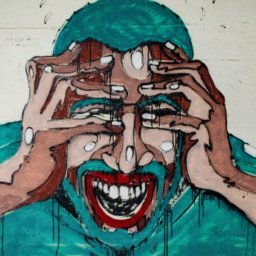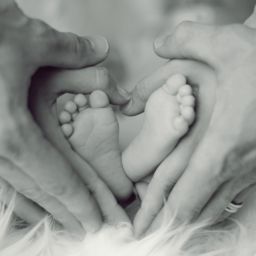“To some, piercing is just another accessory; to others, it’s the beginning of a new life.”
—Dennis Sullivan, Certified Body Piercer, Spokane, Washington (1)
You are standing at the counter waiting to pay for your groceries. You glance at the queue behind you and find yourself standing next to a man covered with small, silver beads. Several of them appear to be dangling off his nostrils. Two are poking out of his lower lip, and my god, what is that monstrosity next to his right eyebrow? How do you react? Do you keel away in horror, dropping your shopping cart and screaming out the door in disgust? Or do you swivel your head back and avoid eye contact while internally shaking your head in disbelief. Some people, eh?
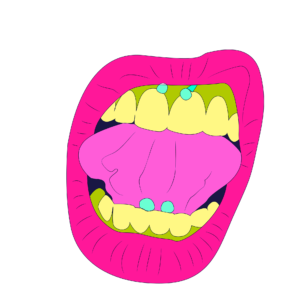
Body piercing is the practice of puncturing a part of the body to create a hole (2). Body piercings have a rich history, dating back to well before biblical times. The oldest mummified remains, a 5300 year-old Iceman found in Austria, were found with earrings, (2) while tongue piercings were common amongst the Aztecs, often used to draw blood and please the Gods. Nose piercings have often been connected to the Hindu goddess Lakshmi (2) and even today it is still customary for some Indian Hindu women to wear a nose stud in their left nostril, with the nostrils association with the female reproductive system in Ayurvedic medicine (2). Meanwhile, Roman Centurions would supposedly have nipple piercings to allow them to attach their capes and sling them over their shoulders (3).
Today, these more ‘experimental’ piercings are still practiced in the non-Western world. Within some African tribal cultures, tongue and lip piercings are still sported as a sign of beauty (2). Yet when we look at the West, what we often face is a level of repulsion and stigma against such practices. While piercings began to become more popular during the 1970s (2), they are still a controversial practice. It is well-known that when going for an interview you should hide any facial piercings as best you can, with some even referring to facial piercings as a pathway to unemployment. Would you feel uncomfortable to have to deal with a cashier with a piece of metal dangling from his chin while you pack your groceries?
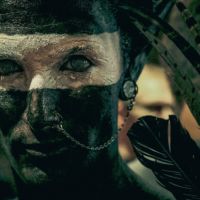
Piercings are a part of our culture and our history. They are a way of expressing oneself through adaption of ones body, whether it be by battling conforming standards of beauty, increasing confidence in revealing oneself or simply because you were bored and got drunk one night. There are so many avenues one can explore through piercing, whether it be the standard ear lobe (beware of gun piercings!) to more daring and eyebrow-raising adventures. For some it is nothing more than an extension of their body, equivalent to putting on some lipstick or adding some hair extensions.
Like many others, my first piercing was an attempt to conform to social standards; piercing both ear lobes so that I could wear sparkly earrings on a night out and a nice set of pearls to go with my dress. But as I took more of an interest in the art of piercing I realised there was more to this than beauty. It was a way of feeling liberated from both myself and society, having the autonomy to transform my body according to my own rules and expressing myself in a way that I could hide or show as I wished. What I didn’t think about though, was employment. Specifically, the very conservative employment that I was (and continue to be) in.
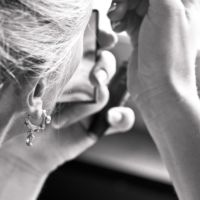
Medicine is indeed a conservative profession but it is trying to shed its image. Doctors in the UK no longer wear white coats in an attempt to get rid of their paternalistic image (not to mention the concerns around infection control) and more medical schools are now offering widening-access courses to ensure they reach students from all backgrounds rather than repeating the cycle of nepotism that has driven medicine for the past few centuries (4). We want our doctors to be reflective of the society that they treat, inclusive of age, life experience, gender, race, ethnicity and more. So what is it about piercings that still makes people shake their heads and hark back to the doctor in his waistcoat?
If it is about trust as some argue, then this raises the question of exactly how far we as clinicians should adapt our personal lives to the expectations of our patients and their vision of the old-fashioned, trust-worthy doctor. How much of our lives should we cater towards the stereotypes of our patients in the name of public confidence? Should we only eat green vegetables and cycle to work every morning because that’s what we tell our patients to do? Should we all attempt to gain our medical degrees from Oxford and Cambridge because some patients may (wrongly) believe that only these universities make the best doctors? Or act like we know all the medications and their doses off by heart because the public cannot imagine a doctor having to look up medication in the British National Formulary!
What does a piercing in my nose or a tattoo on my wrist tell you about my abilities as a clinician? What do the streaks of red hair or my black converse trainers tell you about my work-ethic or my empathy and compassion? Doctors should reflect the public that they treat. The argument for tattoos or piercings or even unnatural hair colours may sound superficial (which it kind of is), but it emphasises the on-going expectations and beliefs that we have about our doctors. Yes, trust is important when it comes to upholding public confidence in the medical profession and it is important we are just as candid, respectful and civil in our personal lives as we are in our professional, but what on earth does my tongue piercing have to do with this? If we continue to place the white, male, impeccably dressed and well-spoken doctor upon the pedestal of the ‘perfect doctor’ then we barr the way to a more diverse profession. There has been a lot of recent emphasis on diversity training amongst medical students to battle stereotypes and prejudices we may have towards our patients (5); maybe we should apply these lessons to ourselves first.
References
- Gaffaney, G. 2013. The Art of Body Piercing. iUniverse.
- Agboh-Stroude, B. 2013. Body Piercing. Evolution or Revolution [Online]. Available at: http://www.afrostylemag.com/ASM9/afro_beauty.html [Accessed: 26th August 2016]
- Painful Pleases. 2013. History of Body Piercings [Online]. Available at: http://info.painfulpleasures.com/help-center/piercing-information/history-body-piercings [Accessed: 26th August 2016]
- Heller, A. 3rd February 2020. Diversity in the medical workforce: are we making progress? [Online]. Available at: https://www.kingsfund.org.uk/blog/2020/02/diversity-medical-workforce-progress [Accessed: 27th December 2020]
- Dogra, N. 2005. Cultural diversity teaching in the medical undergraduate curriculum. Diversity & Equality in Health and Care.
